Marie Antoinette

Brief Synopsis
Cast & Crew
W. S. Van Dyke Ii
Norma Shearer
Tyrone Power
John Barrymore
Robert Morley
Anita Louise
Film Details
Technical Specs

Synopsis
In the Eighteenth century, Empress Marie Therese of Austria tells her daughter, Marie Antoinette, that a marriage has been arranged between her and the Dauphin Louis XVI, heir to the throne of France. Marie expects a life of grandeur, but is confused by her future husband, an extremely shy and introverted man whose only joy in life seems to be derived from his skill as a locksmith. Abandoned by Louis on their wedding night, Marie follows the malicious advice of the power-hungry Duke d'Orleans to find solace in revels and gambling. One day, she meets Count Axel de Fersen, and is stung when he refuses to indulge her imperious whims. Two years after Marie's marriage, Madame du Barry, the mistress of King Louis XV, the Dauphin's grandfather, sends Marie an empty miniature cradle as an anniversary gift, a pointed reminder that Marie has not yet produced an heir. After a confrontation at a ball to conciliate Madame du Barry and Marie, Louis XV decides that the marriage between his grandson and Marie should be annulled. This proposal drives Louis XVI to anger at last, and he defends his wife, but the king remains adamant. Marie, meanwhile, is cruelly discarded by d'Orleans, who stayed at her side only while she enjoyed favor. Marie is consoled by seeing Axel, who reminds her of their childhood friendship and declares his love for her. Plans for an annulment are cancelled when the King unexpectedly dies, and Marie's hopes for a romance with Axel end when he realizes that he cannot conduct a love affair with a queen. He then leaves after vowing his eternal love. The dauphin, now King Louis XVI, becomes an affectionate husband, and soon fathers a daughter and then a son by Marie. Though he tries to be a just ruler, he is unable to stem the tide of mounting social unrest. Marie's extravagances, especially her unwitting purchase of an expensive diamond necklace, exposes the French peoples' hatred for their Austrian queen, and this, along with oppression and the political machinations of d'Orleans, lead to a revolution. By now, the ineffectual king has lost influence over the military, and after the mob storms the palace, the royal family is imprisoned. Immediately after their imprisonment, their friend and companion, Princesse de Lamballe, is taken from them and executed. Hope briefly comes when Axel, whose love for Marie is known by Louis, arranges for an escape by bribing a guard, but the family is soon recaptured. Condemned by the assembly, including the treacherous d'Orleans, the royal couple and their children share one last dinner. The next day the King is executed, and Marie and her son are separated. The boy is forced to testify against his mother at the assembly and they are both sentenced to death. Axel comes to the now prematurely aged and worn queen one more time before she is led to the guillotine.

Director
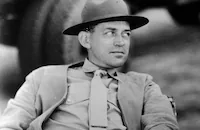
W. S. Van Dyke Ii
Cast

Norma Shearer

Tyrone Power

John Barrymore

Robert Morley

Anita Louise
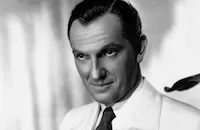
Joseph Schildkraut
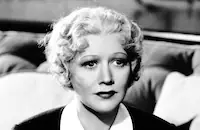
Gladys George
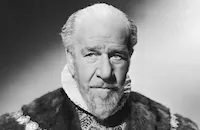
Henry Stephenson
Barnett Parker
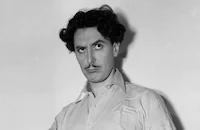
Reginald Gardiner
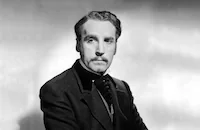
Henry Daniell
Leonard Penn

Albert Dekker
Alma Kruger

Joseph Calleia

George Meeker

Scotty Becket
Marilyn Knowlden

Cora Witherspoon

Peter Bull

Robert Barrat

George Zucco

Mae Busch

Cecil Cunningham

Ruth Hussey

Walter Walker

Moroni Olsen
Olaf Hytton
Brent Sargent
Tom Rutherford
Charles Waldron
Lionel Royce
Howard Lang

Mary Howard

Ivan F. Simpson
Ian Wulf
John Burton
Victor Kilian
Father Lani's Chorus
St. Luke's Choristers
Little Billy
Bill Platt
Tudor Williams
Earl Covert
M. Morova
Crew
Adrian
H. B. Boswell
Rebecca Breskin
John Dawn
Ray Deichsel
Howard Dietz
William Edmondson
George Folsey
Chet Forrest
Cedric Gibbons
William A. Horning
May Huyn
Talbot Jennings
Thelma Johnson
Robert J. Kern
Lou Kolb
Frank Messenger
Elliott Morgan
Albertina Rasch
George Richelavie
Douglas Shearer
Leonard Smith
Mary Smith
Gile Steele
William Steinkamp
Donald Ogden Stewart
Herbert Stothart
Herbert Stothart
Hunt Stromberg
Jacques Tourneur
Ernest Vajda
Slavko Vorkapich
John Wenzel
Claudine West
Edwin B. Willis
Bob Wright

Photo Collections
Videos
Movie Clip





Trailer
Hosted Intro
Film Details
Technical Specs

Award Nominations
Best Actress
Best Art Direction
Best Score
Best Supporting Actor
Articles
Marie Antoinette (1938)
When the film opens Marie Antoinette is offered in an arranged marriage to Louis Auguste, the Dauphin of France (Robert Morley), and heir to the French throne. But Louis Auguste is a physically repellant and intellectually crippled mate who proves an unwilling husband as well. Marie finds her problems added to by Madame Du Barry (Gladys George), King Louis XV's (John Barrymore) scheming, devious mistress who finds special sport in Marie and Louis Auguste's inability to produce a child and heir to the throne. Though Marie initially seems to enjoy the support of the Duke d'Orleans (Joseph Schildkraut), he later reveals himself to be a duplicitous and unreliable confidante, more concerned with gaining power than aligning himself with an unpopular royal.
Soon driven away from the court of Versailles, Marie exacts her revenge by becoming the party girl of the realm and spending her fortune with reckless abandon. She also begins a dalliance with the handsome Swedish nobleman Count Axel de Fersen (Tyrone Power). But when the King dies and Louis Auguste becomes the new King, Count de Fersen is unwilling to continue their affair.
Committing herself to France and her husband, Marie bears two children but her restoration to a position of power and status proves her undoing. Marie and Louise Auguste are eventually imprisoned by rebels attempting to overthrow the monarchy during the French Revolution. And despite Count de Fersen's efforts to rescue her, she eventually meets her fate, along with her husband, beneath the blade of a guillotine.
As far back as 1933 Shearer's husband and MGM's head of production Irving Thalberg began plans to one day have his wife play the doomed French queen. But after Thalberg's death in 1936, Shearer took a sabbatical from acting.
Nevertheless, Shearer seemed fated to play Marie Antoinette and the film was her heralded return to film after her husband's death. Returning to MGM, however, was not without its difficulties. After Thalberg's death, tensions between Shearer and MGM head Louis B. Mayer grew considerably. Shearer's lawyers demanded that she and her children were due part of MGM's profits under Thalberg's contract, but it was an idea that infuriated Mayer.
In response to Shearer's demands, Mayer did his part to sabotage the Marie Antoinette production. His most significant strike was in replacing Shearer's preferred director, Sidney Franklin, with W.S. Van Dyke who some have suggested knew nothing of French history. Dubbed "One-Take Woody," Van Dyke was also known never to make more than two takes for any scene, thus saving Mayer a considerable amount of money. Shearer was angered by Van Dyke's refusal to be deferential, or allow her more than two takes though Shearer's biographer Gavin Lambert notes that the pair eventually grew to appreciate each other's working methods.
Tensions weren't restricted to the feud between Shearer and Mayer. Shearer's costar Robert Morley reportedly so disliked the production he dubbed it "Marie and Toilette." Twentieth Century-Fox head Darryl Zanuck had some issues with the Marie Antoinette production too. He was infuriated that a star of Tyrone Power's magnitude, who played Marie Antoinette's lover in the film, was virtually a supporting player. Zanuck vowed forever after to severely restrict loaning out his top box-office stars.
Marie Antoinette received multiple Academy Award nominations for Best Interior Decoration and Best Score among others. And Shearer received her forth Oscar nomination for the film, though she lost to Bette Davis in Jezebel (1938). Morley also lost his Best Supporting Actor nomination to Walter Brennan in Kentucky (1938).
Production designer Cedric Gibbons went to great effort to put Marie Antoinette's enormous budget to good use. Determined that the sets look authentic, enormous amounts of preproduction research traced the fashion, customs and decor of the French court. Gibbons ensured the film's opulent tone by purchasing set dressing from actual Paris antique stores. And in order to manufacture the elaborate hats for the film, costume designer Adrian had a milliner from Paris brought to Hollywood.
Not that Hollywood couldn't also improvise when needed. To re-create the Palace of Versailles the filmmakers took a novel approach. They decorated the facade of the Hollywood Park Racetrack in Inglewood, California to look like Versailles then edited in background film of the actual French palace. It was the first time the French government had allowed a motion picture to shoot Versailles.
Marie Antoinette was based upon the book by Stefan Zweig whose biography uncovered vital new information found at the state archives in Vienna. According to Norma Shearer biographer Gavin Lambert, Zweig discovered that Louis XVI's impotence was traceable to phimosis, an irregularity in the foreskin later corrected through circumcision. The archives also provided evidence of Marie's affair with the Swedish nobleman Count Axel de Fersen, though the Hollywood Production Code restricted the script from stating any of these facts outright.
Marie Antoinette was a film made, according to Mayer's strictures, on the cheap. Finished in just ten weeks for less than two million dollars, its modest budget was an amazing sum for a production of that size.
A solid though not astounding success, Marie Antoinette did manage to gross almost $3 million, a sum greater than any previous MGM film. Variety said the film "approaches real greatness" though the reviewer admitted that the final decapitation of its heroine was "depressing," and "the exit is on the emotional downbeat."
Director: W.S. Van Dyke II (Julien Duvivier, uncredited)
Producer: Hunt Stromberg
Screenplay: Claudine West, Donald Ogden Steward, Ernest Vajda, F. Scott Fitzgerald, based on a book by Stefan Zweig
Cinematography: William Daniels
Production Design: Cedric Gibbons, William A. Horning
Music: Herbert Stothart
Cast: Norma Shearer (Marie Antoinette), Tyrone Power (Count Axel de Fersen), John Barrymore (King Louis XV), Gladys George (Mme. Du Barry), Robert Morley (King Louis XVI), Anita Louise (Princess DeLamballe), Joseph Schildkraut (Duke of Orleans), Henry Stephenson (Count Mercey), Reginald Gardiner (Artois).
BW-150m. Closed captioning.
by Felicia Feaster

Marie Antoinette (1938)
Marie Antoinette (1938)
Shearer expressed a desire to retire when Thalberg died, but MGM wouldn't hear of it. She was a sure moneymaker and the $400,000 already tied up in pre-production costs for Marie Antoinette was too much to risk. Rumor has it the studio made the settlement of Thalberg's will contingent on Shearer continuing her contract with the studio.
Marie Antoinette turned out to be the second most expensive movie MGM produced in 1938. To create the film's 98 sets, the art department, under Cedric Gibbons, documented 11,000 photographs sent from Versailles to Hollywood. They collected 2,500 books and visual elements and bought rooms full of 18th century furniture.
Despite the attention to detail, some Hollywood license was taken. The grand staircase that appears in the film was actually demolished at Versailles in 1752. The ballroom never existed at the actual palace. And the chapel is more like the one at Fontainebleau than Versailles. Gibbons explained that it would have been impossible to duplicate Versailles on screen because the design was too delicate. It would not have photographed well.
So while Marie Antoinette may not be perfect history, as an example of MGM's grand period spectacle, it stands the test of time. And in the end, Shearer got the last laugh. Her role as Marie Antoinette won her an Oscar nomination for Best Actress. Also nominated was Gibbons for Best Interior Decoration.
The film is also notable for Tyrone Power's appearance as Count Axel de Fersen. The actor made a strong impression on audiences the year before in Lloyds of London and quickly became 20th-Century-Fox's most popular leading man. This would be one of his rare efforts for another studio besides Fox though he would continue to play matinee idol parts like this for years.
Director: W. S. Van Dyke
Producer: Hunt Stromberg
Screenplay: F. Scott Fitzgerald, Donald Ogden Stewart, Ernest Vajda, Claudine West (based on the biography by Stefan Zweig)
Cinematography: William H. Daniels
Editing: Robert Kern
Music: Herbert Stothart
Cast: Norma Shearer (Marie Antoinette), Tyrone Power (Count Axel de Fersen), John Barrymore (King Louis XVI), Robert Morley (King Louis XVI), Anita Louise (Princess DeLamballe).
BW-149m. Closed captioning.
by Stephanie Thames
Marie Antoinette (1938)
Motion Picture Masterpieces - MOTION PICTURE MASTERPIECES - 5 MGM Favorites on DVD Including "David Copperfield" & "Pride and Prejudice"
Hollywood's first movie version of Pride and Prejudice, directed by Robert Z. Leonard and released in 1940, has never been topped. One reason is superb production work by art director Cedric Gibbons, costume designers Adrian and Gile Steele, and cinematographer Karl Freund, who forgoes his German Expressionist roots to capture exquisite images of England in the early 19th century. The film's other big triumph is its cast, topped by Greer Garson as lively, lovely Elizabeth Bennet and Laurence Olivier as her prideful suitor Mr. Darcy, an ideal role that elicited one of his most restrained and refined performances. The movie adds gimmicky episodes for visual excitement-a carriage race, an archery contest-and sugar-coats the ending. But it's terrific entertainment anyway.
Marie Antoinette, directed by W.S. Van Dyke in 1938, turns the MGM design team loose on the sumptuous Versailles Palace in 18th-century France, where our heroine copes with a hapless husband, falls for a Swedish aristocrat, outgrows youthful irresponsibility to become a compassionate queen, and faces the guillotine after the French Revolution erupts. Norma Shearer is excellent in the title role. Tyrone Power plays the underwritten Count Axel with elegance and charm. And many scenes get stolen by Robert Morley as the Dauphin, a tragicomic character who's heading for the throne but can't figure out how to consummate his marriage. This opulent production is more conventional than the 2006 remake by Sofia Coppola, but just as absorbing. MGM had a flair for the French Revolution, giving it even stronger treatment in Jack Conway's marvelous 1935 version of Charles Dickens's novel A Tale of Two Cities, starring Ronald Colman as the self-sacrificing hero. It's also in the Masterpieces set.
It's hard to beat the story of Treasure Island, with brave young Jim Hawkins setting sail on a pirate-infested ship in search of the legendary Captain Flint's buried hoard of gold and jewels. The best asset of MGM's uneven 1934 version is the supporting cast, especially Nigel Bruce as likable Squire Trelawney and Lionel Barrymore as Captain Billy Bones, the rowdy buccaneer who sets the tale in motion. The leads are less impressive, owing to MGM's not-so-great idea of re-teaming the stars of The Champ, a big hit three years earlier. Jackie Cooper expostulates "Bless my soul!" so often you want to hang him from the yardarm, and Wallace Beery makes Long John Silver more cuddly than a self-respecting pirate would ever want to be. The adventure was directed by Victor Fleming, and there's little to suggest he was just five years away from putting his signature on Gone With the Wind in 1939.
The Personal History, Adventures, Experience, & Observation of David Copperfield, the Younger, released in 1935, has always gotten extra points for featuring W.C. Fields as Mr. Micawber, a role he was born to play. In other respects, though, this is one of Hollywood's weaker Charles Dickens adaptations, and one of George Cukor's least memorable directing achievements. Picturesque posing carries more weight than sharp character sketching, and the atmosphere of Victorian England rarely comes alive. Solid work by Basil Rathbone and Jessie Ralph, as Mr. Murdstone and Nurse Peggotty, is overshadowed by lackluster acting from the likes of Roland Young and Lewis Stone, whose Uriah Heep and Mr. Wickfield make sadly wan impressions. Even the inimitable Fields gets weighed down by the screenplay, which cares more about the novel's catch-phrases than the context they need. What should have been a sparkling comedy-drama becomes a period piece that seems longer than its title, which at least has a truly Dickensian ring.
Each of the five Motion Picture Masterpieces discs has offbeat DVD extras. Some are connected with the features-versions of David Copperfield and A Tale of Two Cities made for 1930s radio-but the most fascinating are unrelated MGM shorts and animations from the period. Shorts like Two Hearts in Wax Time, about a drunk and a pair of mannequins, and The Spectacle Maker, about a magic monocle, are so bizarre it's hard to imagine what the filmmakers could have been thinking of. Ditto for a cartoon like Poor Little Me, starring Stinky, a skunk. There's also an "oddity" from Pete Smith that will make you look at stunt bowling in a whole new way, if you've ever looked at it in the first place. Singular items like these are worth the DVD price by themselves.
For more information about Motion Picture Masterpieces, visit Warner Video. To order Motion Picture Masterpieces, go to TCM Shopping.
by Mikita Brottman and David Sterritt
Motion Picture Masterpieces - MOTION PICTURE MASTERPIECES - 5 MGM Favorites on DVD Including "David Copperfield" & "Pride and Prejudice"
Quotes
Perhaps the great loves come with tears.- Marie
Trivia
Originally to be directed by Sidney Franklin (I), but replaced by W.S. Van Dyke.
This was Irving Thalberg's last project while head of production at MGM. At the time of his death in 1936, the film was in the planning stages, but his widow, Norma Shearer, took special interest in the film and stuck with it to its completion in 1938.
Irving Thalberg originally planned for Charles Laughton to play the role of Louis XVI. Laughton, after lengthy deliberations, finally declined.
For the first time, the French government permitted filming at the Palace of Versailles for a motion picture.
MGM's creation of the Palace of Versailles was twice as large as the original.
Notes
An onscreen dedication reads: "To Sidney Franklin...for his contribution in the preparation of this production...grateful acknowledgement." According to contemporary news items in trade publications, and information contained in the M-G-M story files at the USC Cinema-Television library, pre-production work on the film began in 1933. At that time, Sidney Franklin was assigned to direct the picture and Claudine West and Ernest Vajda were assigned to the script, which was to be supervised by M-G-M production head Irving Thalberg. News items in late 1933 through 1935 indicate that Norma Shearer, Thalberg's wife, was to take the title role and that Charles Laughton was "signed" to play opposite her as King Louis XVI. In late December 1935, it was announced that Marie Antoinette was to be the first major M-G-M production shot in Europe, and Thalberg was planning to go to Europe in preparation for the film in June 1936. The production was delayed a number of times, and after Thalberg's death in mid-September 1936, it appeared that the film might be shelved. In late August 1937, M-G-M assigned Jacques Tourneur, who later acted as second unit director on the film, to prepare a short documentary film about the last days of Queen Marie Antoinette to generate interest in the main film.
By the time the picture was again back on M-G-M's production schedule in 1937, Charles Laughton was no longer available for the role of Louis XVI and Peter Lorre and Oscar Homolka were both tested for the part. In a modern New York Times interview, actor John Gielgud has said that he, too, was considered for the role. In early December 1937, Lorre was announced as the first choice for the role, but by the time filming began on 30 Dec, English actor Robert Morley had been awarded the part. Marie Antoinette marked Morley's motion picture debut and his last film made in the United States until Take Her-She's Mine in 1963 (see AFI Catalog of Feature Films, 1961-70; F6.4853). Maureen O'Sullivan was signed for the role of "Princess de Lambelle," but she had to replace the ill Luise Rainer in the lead of M-G-M's Port of Seven Seas (see below) and was thus prevented from appearing in Marie Antoinette. O'Sullivan was then replaced by Anite Louise, who was borrowed from Warner Bros. for the role. Tyrone Power was borrowed from Twentieth Century-Fox for his role as "Count Axel de Fersen." Early Hollywood Reporter production charts, as well as a studio cast sheet released before the film's completion, list actor Shepperd Strudwick in the role of "Toulan." That role was taken over by Leonard Penn at some point in the film's production. Modern sources add that Herbert Marshall and Robert Taylor were also considered for that role at various times. On or about the first day of filming, Sidney Franklin, who had been with the project from the beginning, was replaced by W. S. Van Dyke II. According to a Hollywood Reporter news item, Franklin was "ill," but modern sources have indicated that after Thalberg's death, M-G-M's interest in the project waned and studio executives felt that Van Dyke would be a much faster, and thus cheaper, person to direct the project. In 1939 Franklin became an M-G-M producer, a position he held into the 1950s. The only film he worked on as a director after 1938 was The Barretts of Wimpole Street, a 1957 remake of his 1934 film of the same name.
During principal photography on Marie Antoinette, portions of the film were shot on location at the recently completed Hollywood Park Racetrack in Inglewood, CA. The racetrack's facade was decorated to stand-in for the exterior of the Palace at Versailles. A press release, contained in the AMPAS Library file on the film, from Robert M. W. Vogel of M-G-M's foreign department states, "The French government has authorized the Palace of Versailles to be photographed for the first time as a background in a motion picture." The backgrounds were edited into the racetrack footage in the completed film. In mid-March 1938, filming was halted on the production for two weeks to edit completed scenes and to decorate sets for scenes that needed to be added. During that time, Van Dyke went on a location scouting trip to British Columbia for Northwest Passage (see below). Marie Antoinette subsequently went back into production for an additional two months. An article in Life magazine in July 1938, just after the film's Los Angeles premiere, noted that it cost "only" $1,000,000 to make due to Van Dyke's ecomony. The article also noted, among other things, that M-G-M's recreation of the ballroom at Versailles was actually twice as large as the original.
Screen Achievements Bulletin records indicate that writers Ernest Vajda and Donald Ogden Stewart protested against not being given screenwriting credit in the film's tentative credits submitted to AMPAS on April 5, 1938. Vajda and Stewart are, however, included in the onscreen credits of the released film, along with Claudine West, whose name appeared first. According to news items, the film's lavish premiere was held at the Carthay Circle Theatre in Los Angeles. The event was broadcast on the radio, hosted by masters-of-ceremonies Pete Smith, Don Wilson, Frank Whitbeck, Carey Wilson, Robert Young and Freddie Bartholomew. For its New York opening, M-G-M press representative Howard Dietz arranged for a $100,000 "museum" quality exhibition at New York's Astor Theatre to publicize the picture. Marie Antoinette marked actor John Barrymore's final film for M-G-M after being under contract to that studio throughout the 1930s. Shearer and Morley were both nominated for Academy Awards for their roles in the film. The picture also received nominations in the Art Direction and Music (Scoring) categories.

Miscellaneous Notes
Released in United States 1938
Released in United States 1938
















